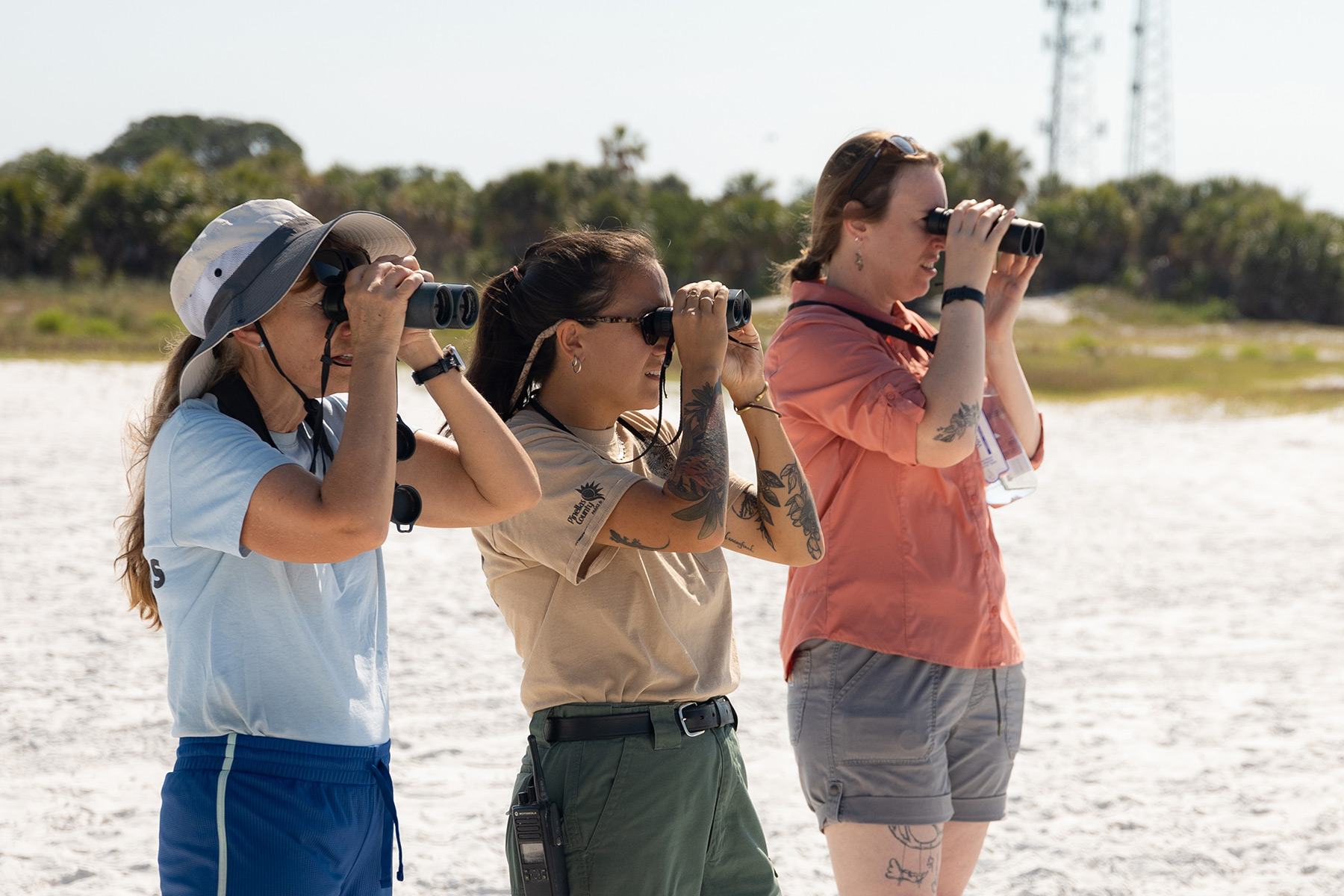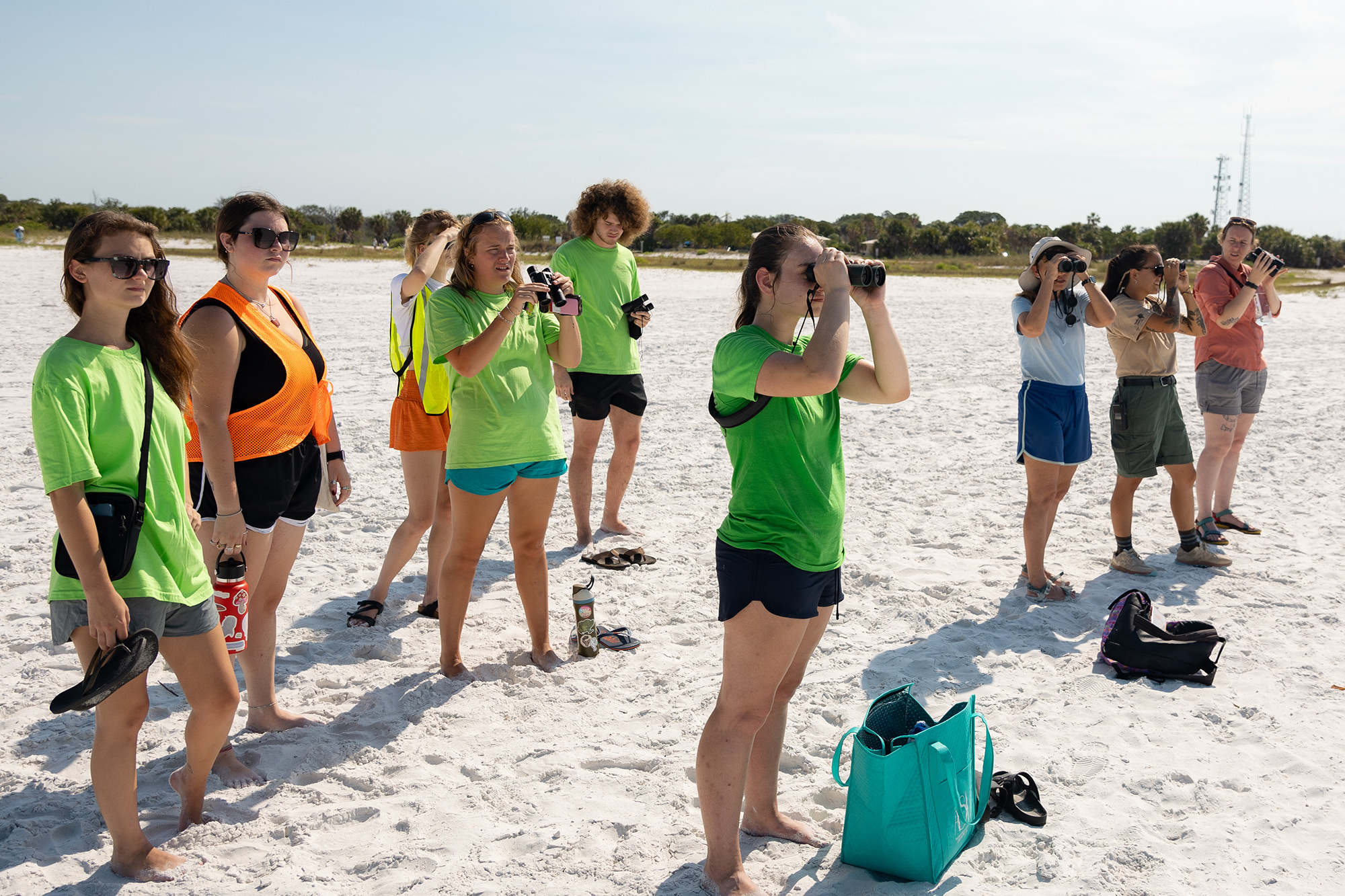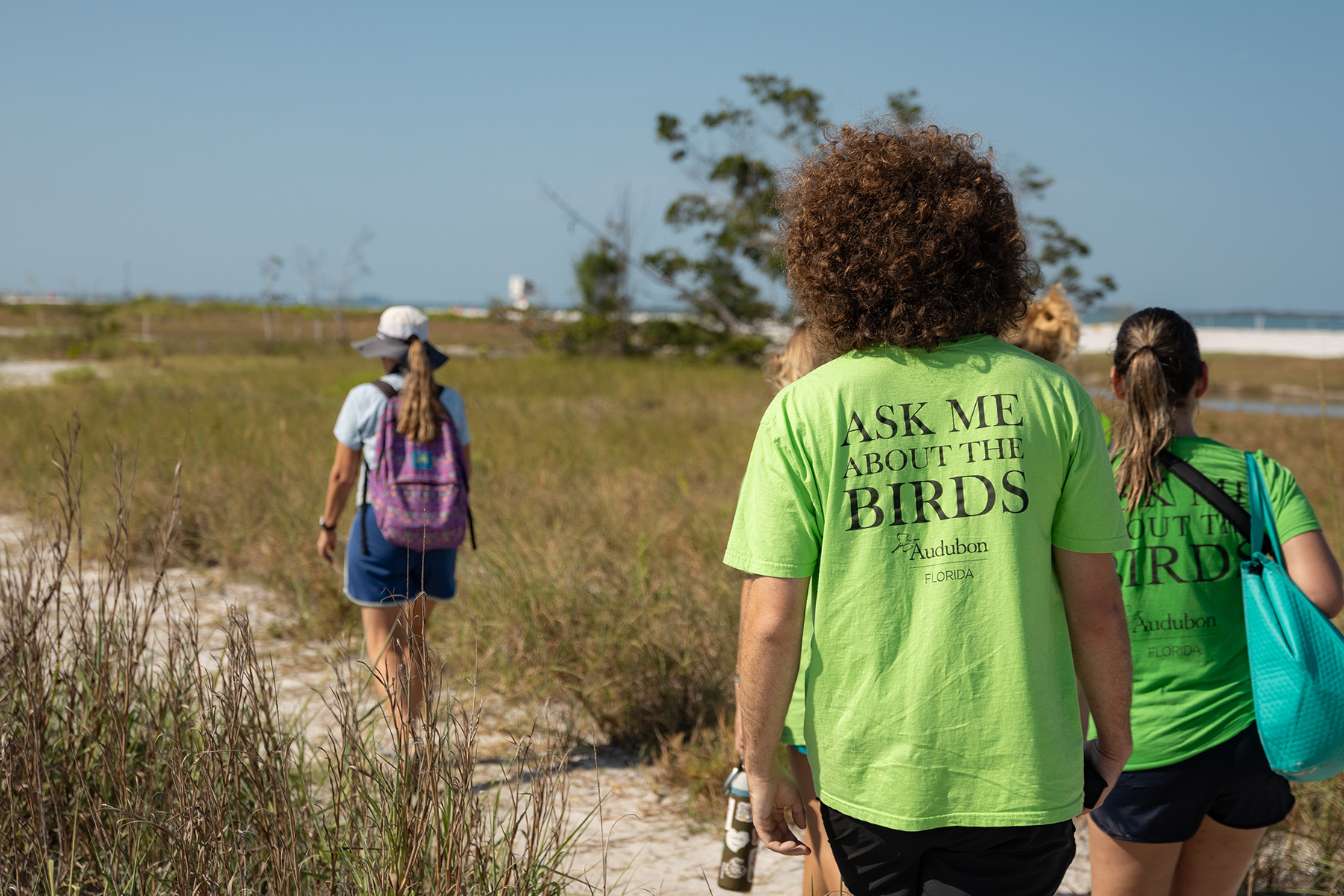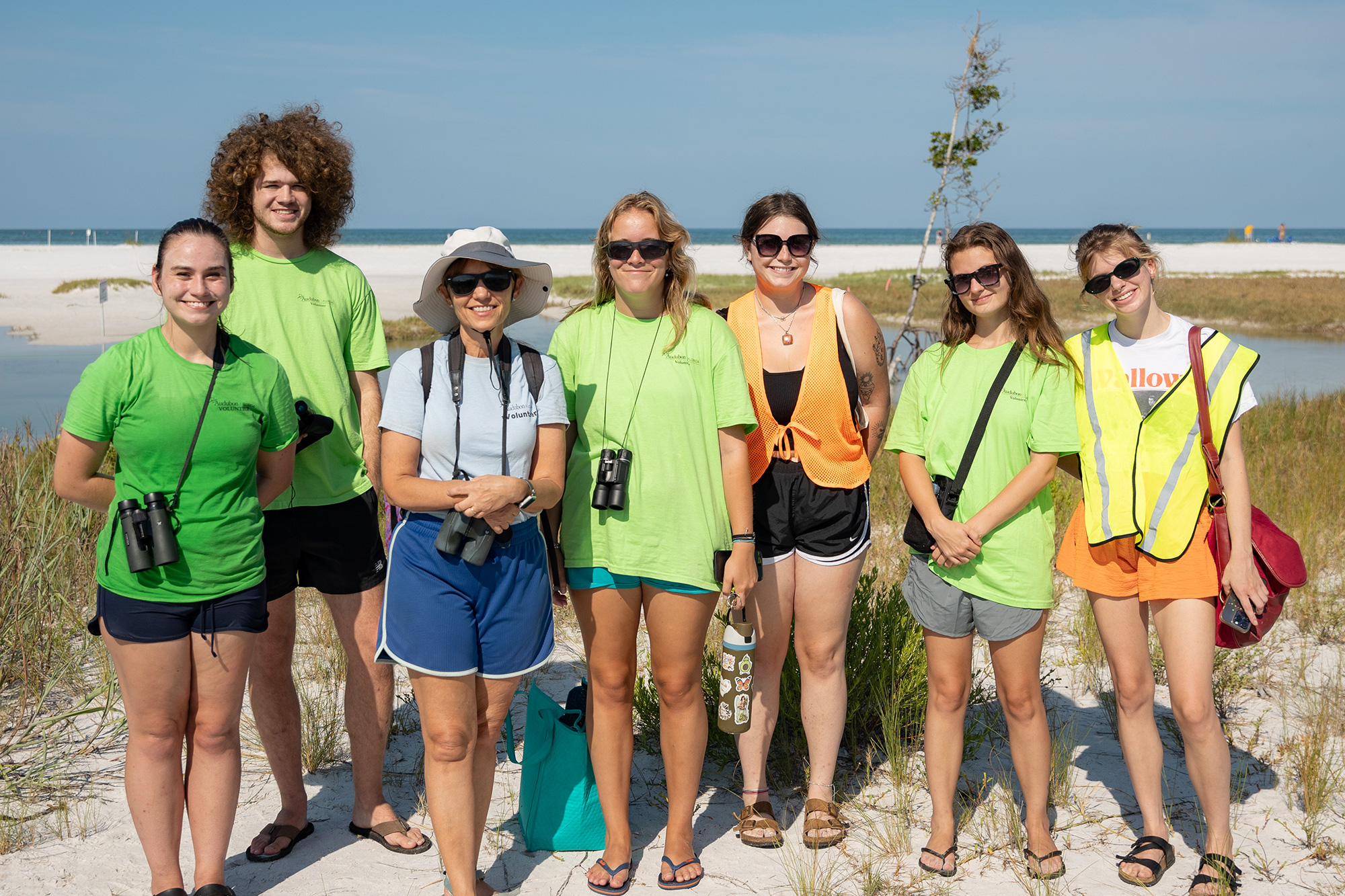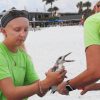Inside a roped-off area a short walk from the pavilions that line the beach at Fort De Soto Park, two pairs of adult American oystercatchers, a threatened Florida seabird, were wading in the shallows searching for food. Following close behind skittered three chicks. It was midmorning on a recent Thursday, and dozens of beachgoers were already making their way around the nesting site.
The birds were safe—there are only about 450 oystercatchers left in Florida. But Elizabeth Forys, Ph.D., standing nearby, knows firsthand that can change in an instant. Forys, professor of environmental science and biology at Eckerd College, explains that children, intoxicated people and folks just out for a stroll sometimes enter the nesting area and disturb the birds. “Photographers can be a problem too,” she adds. “Sometimes they’ll bait the birds in to get a better shot. That’s illegal, and if we see someone doing that, we’ll ask them to stop, or call a park ranger.”
Threatened seabirds like oystercatchers, snowy and Wilson’s plovers, and black skimmers that nest during the summer at Fort De Soto and two other Pinellas County beaches may not have a better friend than Forys and her 16 Eckerd students. Several times over the last 10 years, Forys, who also is the Richard R. Hallin Professor in Natural Sciences at Eckerd, has led a summer session class titled Seabird Stewardship. Along with doing classroom work identifying and studying threatened seabirds, students learn what laws protect them and how to educate the public.
Then comes the difficult part. Forys and her class regularly walk the beaches and make sure people aren’t disturbing the colonies. “We don’t tell people what to do,” Forys says. “We ask nicely.” If that doesn’t work, students are advised to call the state wildlife hotline or a ranger.
The students, who also monitor nesting colonies at St. Pete Beach and Redington Shores with help from anchor stewards from Audubon Florida, collect data on the effectiveness of their stewarding, develop research projects, and write a reflective paper on their experience. The course fully satisfies the College’s Reflective Service Learning requirement.
“All the species we study are imperiled species,” Forys adds. “There are only about 3,000 pairs of black skimmers left in Florida, and St. Pete Beach has one of the largest colonies in the state. The plovers and oystercatchers are even more threatened. So anything we can do to protect the colonies is important.”
And not always easy. Ella Blackstock, a junior environmental studies student from Dover, Arkansas, says she’s witnessed the good and the bad side of seabird stewardship. “I see people’s appreciation of it and their disappreciation,” she says. “St. Pete Beach is a lot more touristy, with the beachside bars and condos. People just want to streamline straight to the beach.
“I’ve had people there get really combative,” she adds. “Someone will walk through the colony and disturb the birds and then use the maintenance trucks as an excuse. But we know the trucks intentionally go around the colonies and avoid them. I also saw a wildlife photographer trying to crawl under a barrier. He acted like he couldn’t hear me, then he circled the colony for 30 minutes before he left. The birds were clearly disturbed by him being there, and he would know that as a wildlife photographer.”
Along with protecting the colonies, a main goal of the class is to use stewardship as a teaching moment for others. “One girl ran through the colony and caused every bird to flush,” Ella says. “When I talked with her, she was so terribly sorry. She was from out of state and had headphones on and didn’t stop to read the signs.”
There are usually several hours at night when only a camera guards the colonies. Fort De Soto Park closes to the public at sunset, but people can gain access to Pinellas County beaches at all hours. “I get very worried about that,” Ella says. “Sometimes I’ll just stick around after my shift. But I know a lot of the locals really care, and I feel that every year we’re getting better.”
They are.
“According to the Florida Shorebird Alliance,” Forys says, “the number of American oystercatchers and black skimmers has increased over the past three years, during which time we’ve had the most stewardship.”
Stella Robson, a junior philosophy student from Hingham, Massachusetts, says the stewardship course “checked all the boxes” when she was looking for Reflective Service Learning hours. “From a philosophy standpoint, it’s interesting to see how humans react to the birds in their natural habitat. People think the birds are taking up their space, but this is the birds’ home. I think once the public has that knowledge, they’ll have a more open mind about the birds.
“I was a marine science major before I switched to philosophy,” Stella adds, “and doing this volunteer work renewed my interest in environmental causes.”





